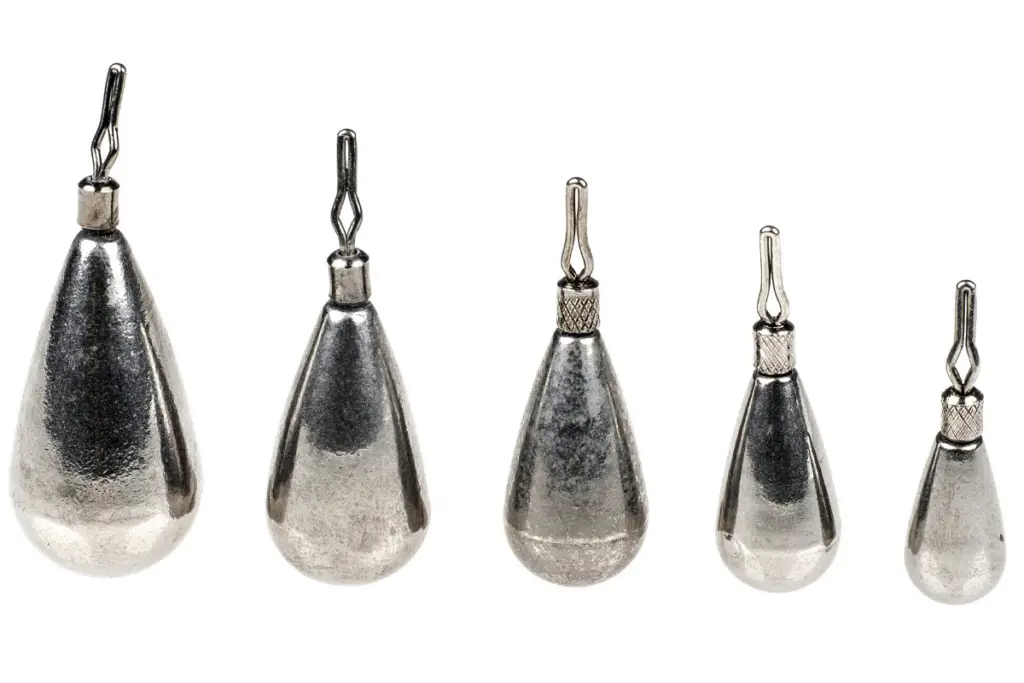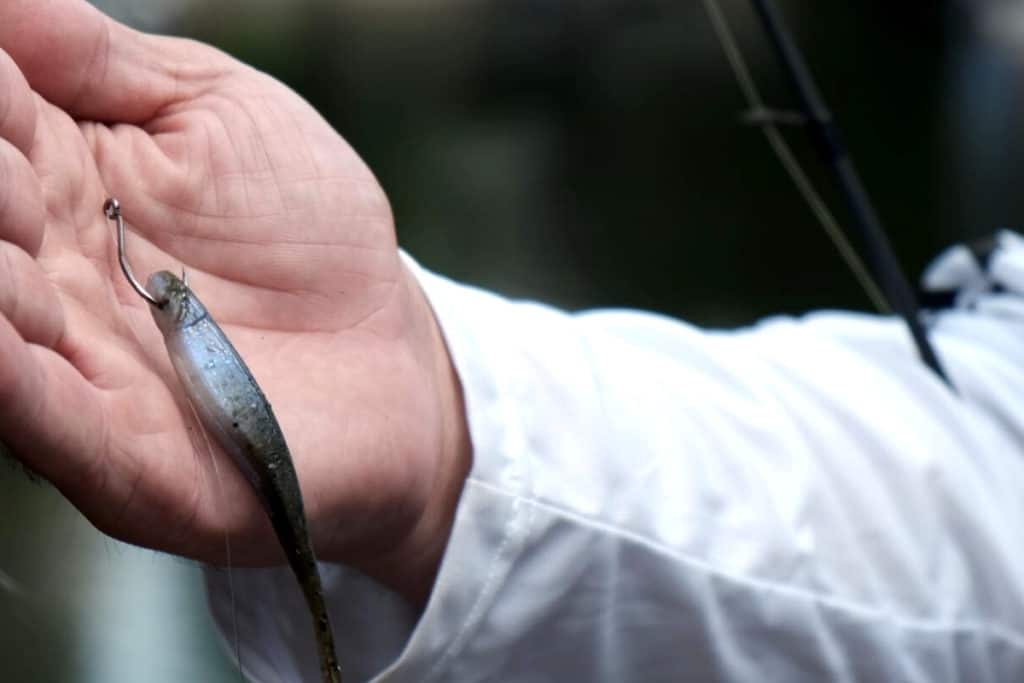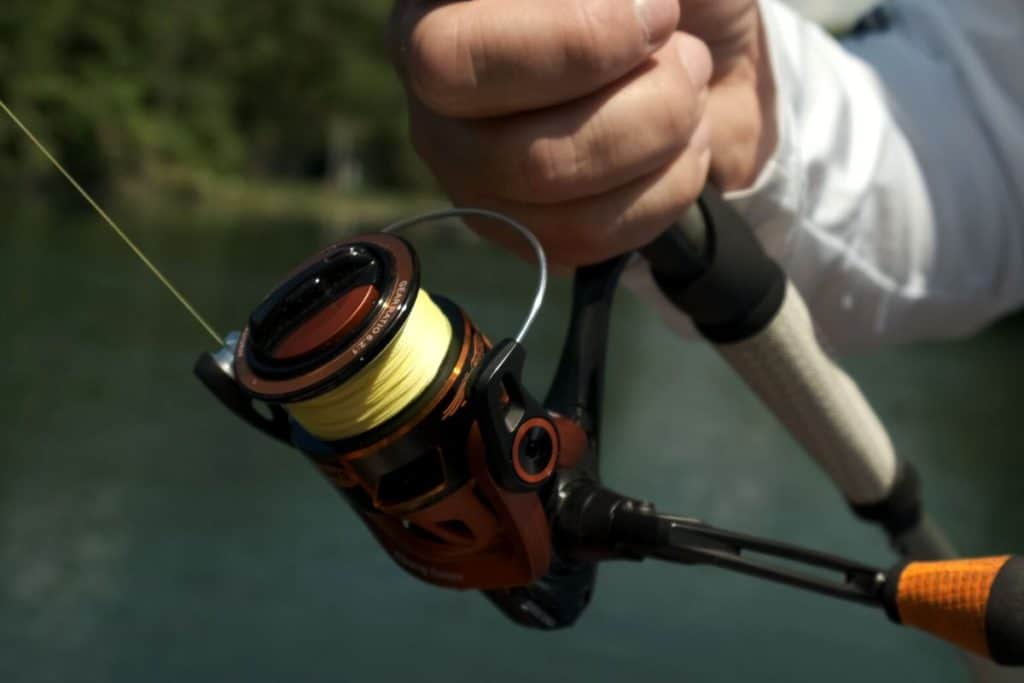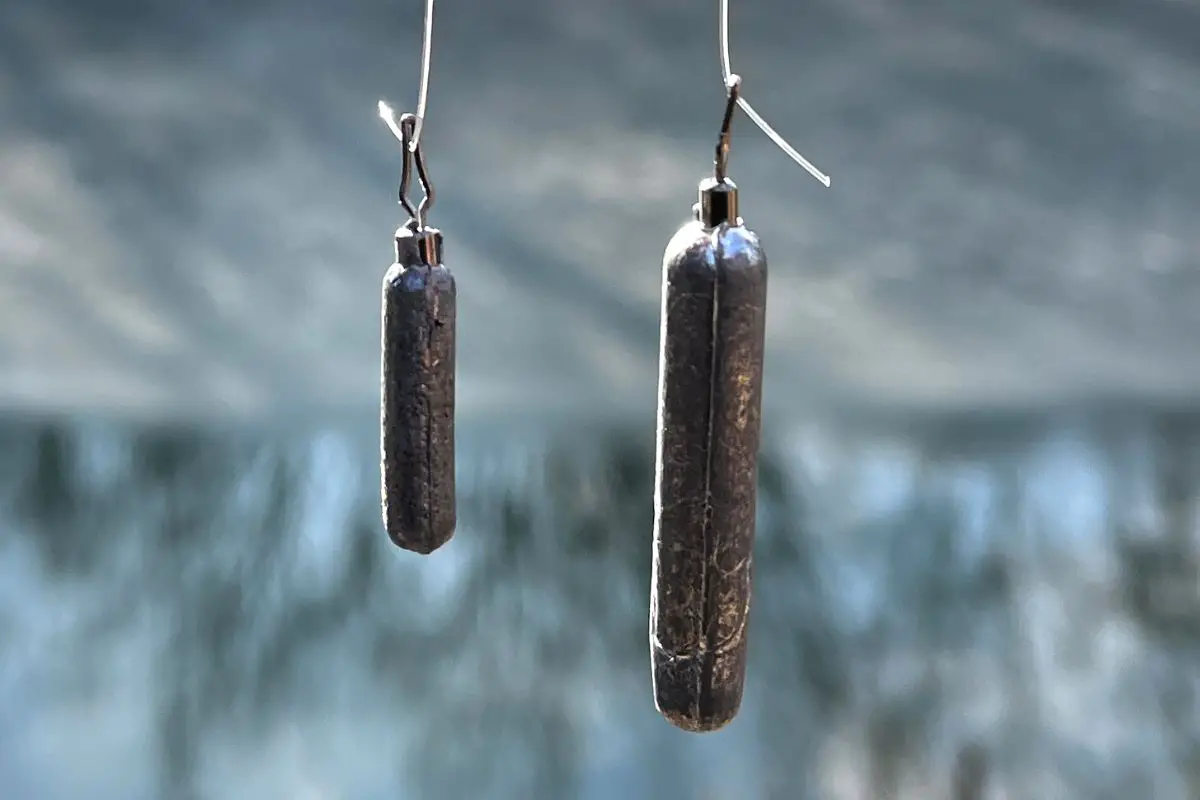In recent years, many professional anglers have been utilizing a power shot rig. This presentation allows them to cover water quickly and find bass faster.
A Power Shot rig is set up the same way as a traditional drop shot rig except the weights are heavier. Anglers may also opt for larger hooks and lures, but these are not necessary.
There are some key benefits to using a power shot rig.
When To Use a Power Shot Instead of a Drop Shot Rig
A traditional drop shot rig is considered a finesse presentation. It is best when the bass are already located.
By adding heavier weights, often in the ½ oz range, bass anglers can now reap the benefits of fishing faster because the lure gets to depth much quicker.
Heavier weights also let us cast the power shot rig a long distance and use a horizontal retrieve instead of vertically fishing the presentation.

If you want to cast the rig a distance, be sure to use a long leader so the soft plastic bait stays elevated off the bottom.
(Here is an article about drop shot leader length and why it matters.)
The added weight turns this presentation into a method that works great when trying to locate bass. Searching is 90% of bass fishing. Turning the fish-catching power of a normal drop shot into a searching lure is a win-win.
A power shot rig also allows anglers to use the extreme fish-catching ability of the drop shot on windy days. Fishing a drop shot with light weights when the wind is strong can be frustrating. Swapping out that ⅛ oz weight for a bigger one makes fishing in the wind a lot easier.

When Would Anglers Opt for the Traditional Drop Shot Weights?
This is a great question.
I prefer to use lighter, more traditional, drop shot weights in the following situations.
First, if the bass are suspended and I am dropping the rig straight down to them and fishing vertically. In other words, if the weight is not making bottom contact at all.
This allows the soft plastic to sink in a slower-dying baitfish manner. There are times when the bass inhale the lure before it ever settles into place. The lighter weight will also allow the lure to glide in a more natural manner when the rod tip is lifted and then dropped.
The small weights will also get used during extremely tough conditions – think bluebird skies and ultra-slick water.

An Interesting Power Shot Presentation
Depending on the water you fish, this may be worth giving a try.
By adding heavier weights, anglers can now pitch a drop shot rig to specific targets.
Here is a great example. Many northern lakes have a sandy or gravel bottom composition that is also stuffed with vegetation like eelgrass.
Bass will roam in and out of the open areas and even sit tight on them. Most often the water is clear and with polarized sunglasses, anglers can see the bass at quite a distance.
By pitching a power shot you can present this ultra-life-like lure with pinpoint accuracy. The added weight also lets you make a quick pitch and then move on to the next one. Bass anglers that fish these types of waters on a regular basis have had great success with this modified drop shot rig.
Power Shot Fishing and Rivers
When fishing a river system with strong current and clean water, the power shot is very effective.
The added weight helps anglers keep the lure where they want it without washing too fast down stream. The heavier rig also telegraphs more information back to the angler in regard to bottom composition.
When we can accurately determine what type of bottom structure bass are holding on it helps us to repeat the pattern.

Rod, Reel, and Line Setup for a Power Shot Rig
When using a traditional drop shot rig, many anglers will opt for a medium or medium-light power rated spinning rod with an extra fast action.
When power shot fishing, I usually use the medium power rated rod. If I decide to scale up the lure and hook then using a medium-heavy rod is not unusual. Some folks will even use baitcast equipment with this entirely scaled-up version.
This is exactly what I did during a tournament on Lake Champlain.
The smallmouth were hammering 5” flukes in watermelon. We rigged them on 3/0 EWG hooks and used baitcast gear. The bass were holding on an outside weed line in about 20 feet of water.
That was the first time I had used heavier equipment, weights, and larger lures when drop shot fishing. We didn’t call it power shotting at the time, but that is exactly what we were doing.
(Here is an article that goes into depth about drop shot lure weights.)
Good luck out there and make sure to encourage someone today. You never know how you might change their life forever.
Isaiah 6:8

